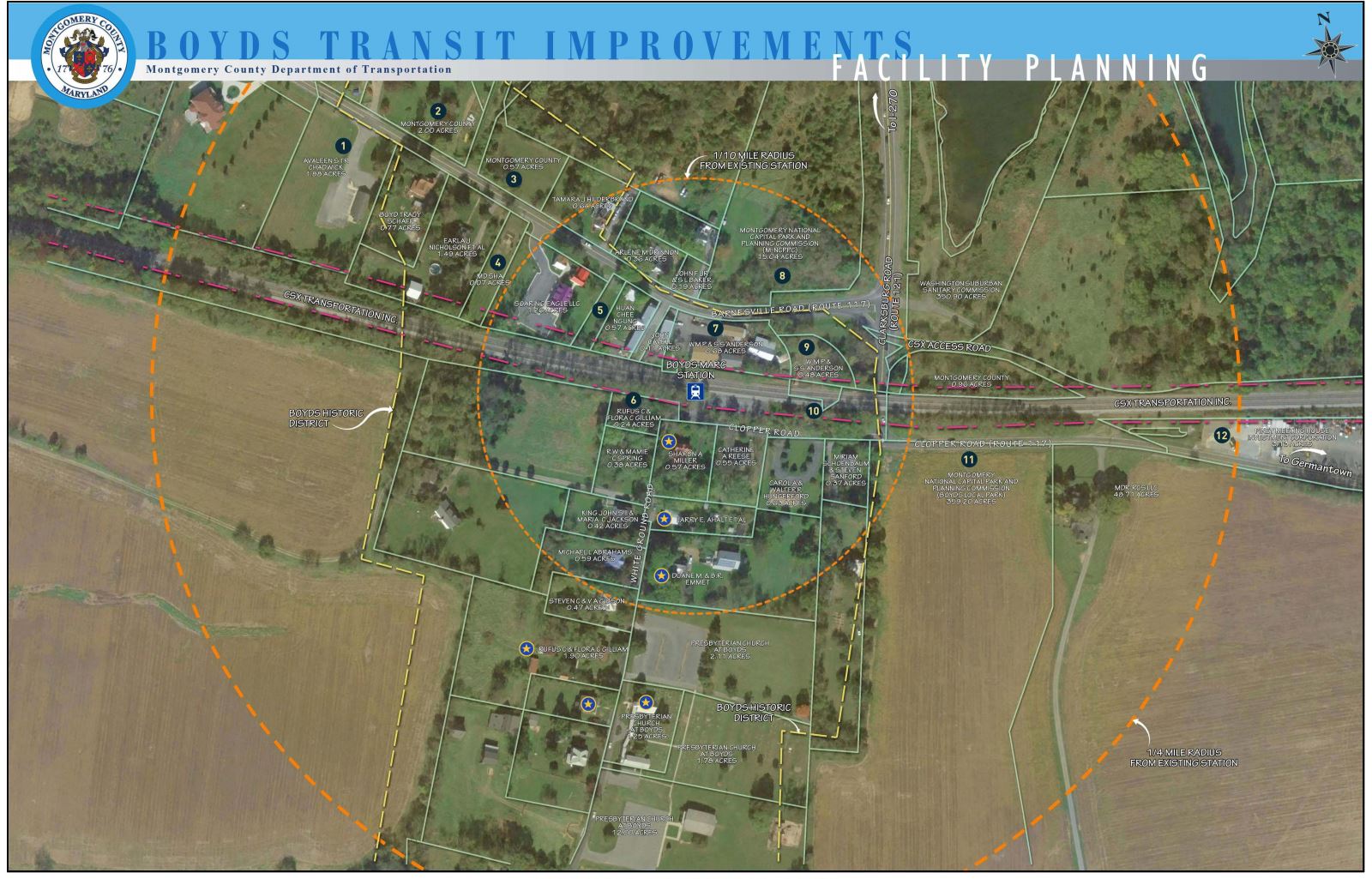
Per MCDOT:
On Tuesday, August 16 starting at 7 p.m., the Montgomery County Department of Transportation (MCDOT) will hold a virtual public hearing regarding the 70% design plans for the Transit Center in Boyds, MD. The public will have an opportunity to provide written and oral testimony on the project design.
The Boyds Transit Center project will provide a new bus loop and parking lot on the former Anderson property at the Boyds MARC station. This project will address the increased demand for commuter parking at the Boyds MARC station and the Ride On needs for future expansion of service from Clarksburg to the MARC station.
Online registration is required to attend. On the morning of the hearing, an electronic invitation to participate in this hearing will be emailed to you. Testimony and information provided will become a matter of public record and may influence final design plans.
The public is encouraged to review the project files posted on the project website prior to attending the hearing.
Written testimony or questions may be submitted to the Project Manager, Rebecca Park, through this online comment form or by emailing [email protected]. Written testimony carries the same weight as oral testimony.
Interpreter services will be provided upon request with five business days advance notice by contacting Rebecca Park.
Learn more about MCDOT’s engineering and construction projects by following @MoCo_DTE on Twitter, or visit montgomerycountymd.gov/dot-dte.
For more information on MCDOT programs and services visit montgomerycountymd.gov/mcdot, follow @MCDOTNow on Twitter, Facebook and Instagram and subscribe to MCDOT’s “Go Montgomery!” newsletter.
# # #
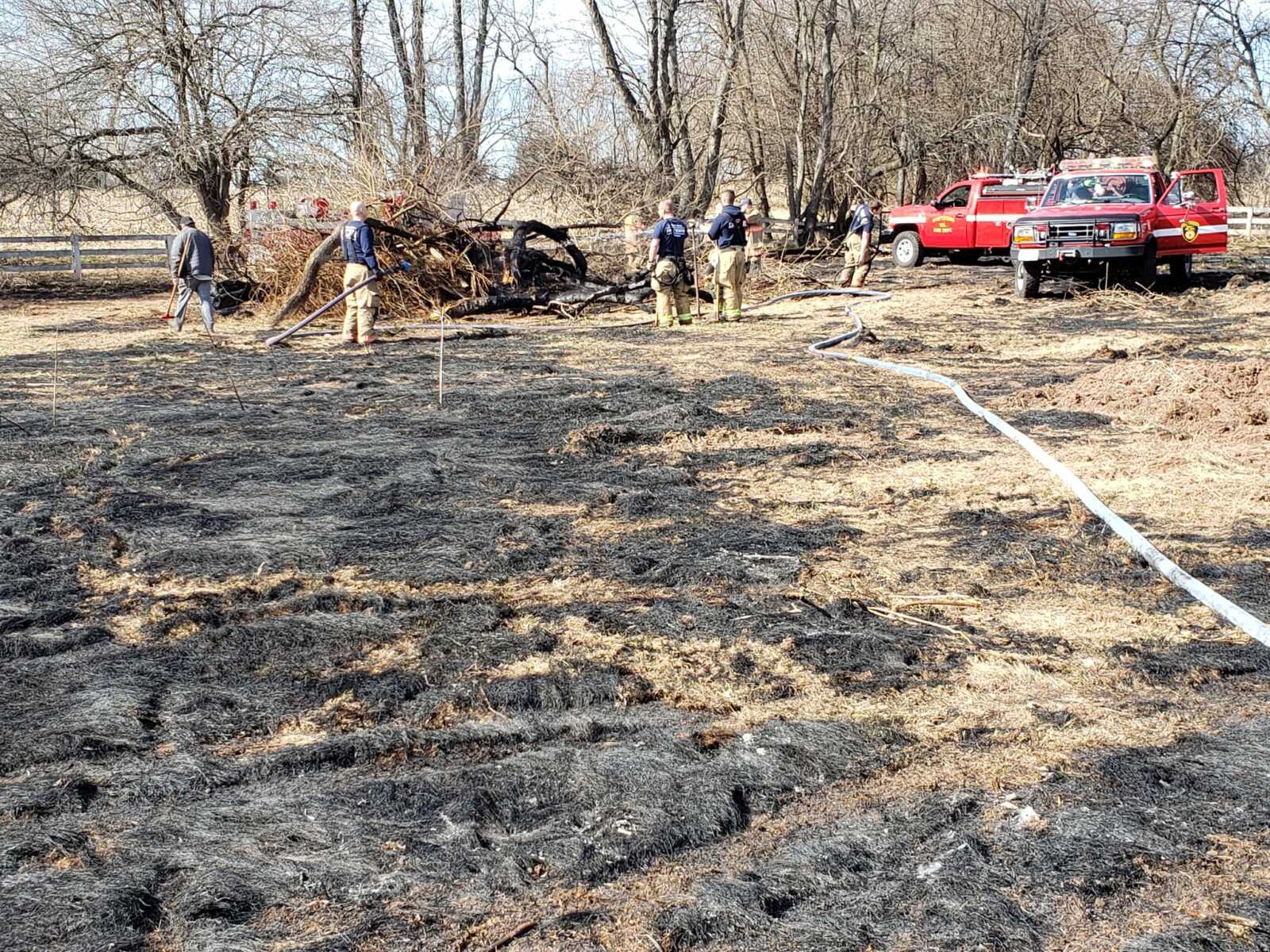
Montgomery County Fire and Rescue Services (MCFRS) we’re called to the scene of a large brush fire on the 17200 blk of Darnestown Rd. in Boyds at approximately 1pm today.
Units from Frederick County assisted with extinguishing a large debris pile along with about an acre of grass on the farm in Boyds.
Several farm buildings were endangered, but did not burn as the fire was extinguished fully by approximately 2:45pm.
One adult male was transported to the hospital with non life-threatening injuries.
MCFRS are on the scene of a large brush fire in the 17200 blk of Darnestown Rd. Units from Frederick County assisted with extinguishing a large debris pile along with about an acre of grass. Several farm buildings were endangered but did not burn. @mcfrsPIO pic.twitter.com/0swigfcigs
— BC Steve Mann (@mcfrsPIO6) March 3, 2022
Maryland Cricket Premier League and Montgomery Parks is hosting the 5th Annual MCPL Rang Aur Patang Utsav 2022 on April 23rd, 2022 – 11am Onwards @ Black Hill Regional Park
“Please join us with your friends and family for this fun filled event which includes, Live Entertainment by DJ, Kids Activities, Non-Toxic Colors, Indian Kites and Manjha (without glass powder so safe for all) and lot more…!!!
If you have young children, then do not worry because we will have tons of entertainment for our little ones!!!”
Kites, Colors and Indian Snacks will be available for purchase at reasonable price.
MCPL asks any interested parties to contact them for more information, vendor inquiries and sponsorship opportunities.
Tickets can be purchased here.


The Maryland Soccer Foundation, in its 23rd year as the governing board of the Maryland SoccerPlex and Adventist HealthCare Fieldhouse, has elected long-time board member Joyce Fuhrmann as its newest president. Fuhrmann is the first woman to hold the post.
Fuhrmann joined the board in 2013 and most recently served as treasurer. She is also Director of the BSE Operations and STEM Initiatives at the Universities at Shady Grove.
“When I first joined the board I was one of two women on the board and it was a goal at that time to add more diverse voices to the board. I joined the board because I was spending lots of time at the SoccerPlex as a ‘soccer mom’ and I wanted to serve in a capacity in which I could support the amazing facility and ensure it continued to be one of the most valued assets in the region,” Fuhrmann said.
Fuhrmann is just the third president in the history of the Maryland Soccer Foundation replacing Brent Hanson who held the post for 10 years. Founding member Ken Solomon was the Foundation’s first president. Board presidents’ terms are indefinite.
As board president, Fuhrmann said her goals for the facility are to find stability for programming post-COVID, make additional facility upgrades, forge new community partnerships and continue to expand sports tourism opportunities. She wants to put an emphasis on elevating the value of physical education and the importance of keeping females involved in athletics. Fuhrmann points to providing a much-needed first stadium and training facility to the National Women’s Soccer League’s (NWSL) Washington Spirit as a commitment to advancing women’s sports.
Since Fuhrmann has joined the board, the Maryland SoccerPlex has completed final build-out of the fields, added field lights to extend play, completed upgrades to the newly named Adventist HealthCare Fieldhouse and broadened the offerings at the complex.
“For me, this about supporting a resource in the community where I live that makes this area great and the value it brings to the region in supporting the economy,” she said. “This is a scrappy nonprofit with a big footprint.”
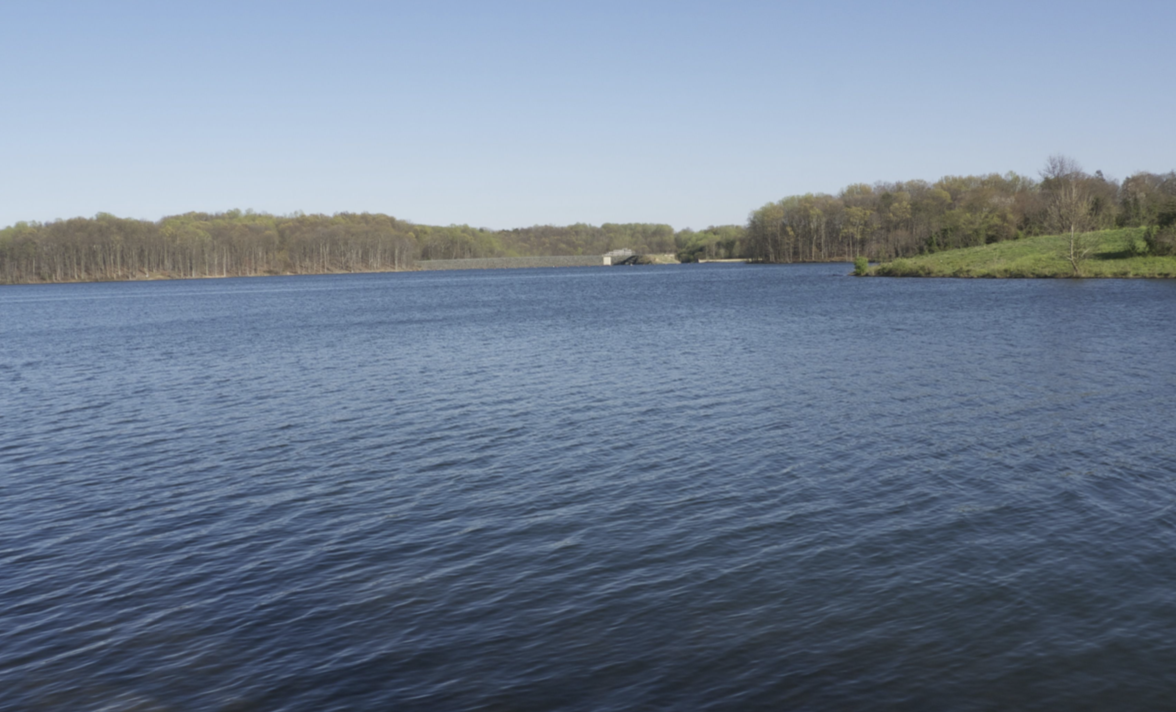
By Susan Soderberg
Families picnicking, children cavorting on the playgrounds, teens paddling around the lake in kayaks and fishermen dropping their lures hoping for a bite, summer is here at Black Regional Hill Park. Black Hill and Little Seneca Lake, forming the northern border of Germantown, is a well-used recreational area, especially on these hot summer days. But the lake was not created only for having fun. It is an emergency water supply for the Washington Suburban Sanitary Commission, the Washington Aqueduct, and the Fairfax County Water Authority in Virginia.
Little Seneca Lake is fed by the flow from Little Seneca Creek and its two main tributaries, Ten Mile Creek and Cabin Branch (“branch” being another word for stream). Native Americans used these waterways for fishing and had hunting camps in the surrounding hills. The first European settlers set up many mills along the fast-flowing streams. Farms were built and the little village of Ten Mile Creek had a school and Pyles grist and saw mill. After the train came through in 1873 people would come up from Washington in the summer to vacation in the country at several hotels in the area. One hotel on Ten Mile Creek that was not affected by the creation of the lake because of being situated on high ground is the 22-room High View Hotel, now a county historic site.
The story of the park and the lake goes way back to the 1960s when the Maryland-National Capital Park and Planning Commission (M-NCPPC) started buying up land around streams in Montgomery County to protect the watersheds and manage the resources of the county. Beginning in 1968, with the help of the Soil Conservation Service, the county surveyed the creeks and streams and developed a plan. The Seneca Creek watershed, and especially Ten Mile Creek were identified as particularly sensitive areas. A 1974 study of Ten Mile Creek showed that its species diversity was one of the highest of small steams in the county with three threatened species of fish: cutlips minnow, comely shiner and rosyside dace.
A Master Plan was developed for the Seneca Creek watershed in 1977, which included a multi-purpose reservoir. This coincided with a major water shortage in the Washington, DC-metropolitan area in the mid-1970s. So, in 1978 the county got together with the Washington Suburban Sanitary Commission (WSSC) and agreed to enlarge this lake and have it as an emergency water supply for the WSSC Potomac River intake. A steering committee was formed of engineers, environmental consultants, geo-technical consultants and government representatives to plan the park and lake.
After a plan was made it was presented to the public at a public hearing. After approval approximately 1,680 acres of land were acquired and the construction of the dam was begun. Twenty-one families were displaced, four dairy farms lost, Rt. 121 had to be redirected and a new bridge built over the forming lake. Of historic sites, one prehistoric site, a one-room schoolhouse and a log slave cabin were lost to the slowly inundating waters, as well as the home and farm of James Boyd, for whom the town of Boyds is named.
As to the benefits, besides an emergency water supply, Little Seneca Lake provides a recreational area, a warm water fishery, flood control, the reduction of sediment, and a new tax base of homes built near the lake to take advantage of the recreation and environment. In addition, the dam, completed in 1984, includes a cold-water release structure that allows water from several levels of the lake to be discharged into the spillway. Consequently, the temperature of the water can be regulated. Cold water coming from the bottom of the deep lake is released during the summer, allowing trout, seeded in the spring, to survive and grow. Wildlife abounds in the 2,000-acre park with beaver, deer, eagles, and many other kinds of birds and waterfowl.
The surface area of the lake is 505 acres and it can be as deep as 68 feet and it holds about 4.5 billion gallons of water. The lake is stocked for recreational fishing. Fish species found in the lake include largemouth bass, tiger muskie, channel catfish, sunfish, and crappie.
The emergency water supply has only been used once since the Lake was created. That was in the summer during the drought of 1999. Hopefully, it will not be needed again in the near future. The Lake and Park provide a wonderful place to escape the summer heat and have a good time, and this will last well into the future.

The 7th Annual Owl Moon Raptor Festival being held at Black Hill Regional Park on November 14, 2021 from noon to four PM.
The festival will feature “Adventures with Raptors” with live owls, hawks, and falcons on display, flight demonstrations, raptor programs, and food and fun activities for the whole family.
Weather and timing permitting, there could be a release of one or more rehabilitated raptors as well.
The new 2022 Owl Moon Calendar and T-shirts will be available for sale along with other items, and a raffle for raptor-themed items.
This event is free and all proceeds from sales and donations will be used to support Owl Moon’s mission to rescue and rehabilitate injured, sick and orphaned birds of prey.
Owl Moon’s Raptor Festival is then organization’s largest fundraiser of the year. Due to the pandemic, it was not held last year, but Owl Moon was able to care for over 300 birds of prey in the last year alone.
Founded in 2002, Owl Moon Raptor Center is a state and federally licensed wildlife rehabilitation center specializing in birds of prey. We have been a licensed non-profit organization since 2014. Owl Moon is located in Boyds, Maryland at the home of its primary operator, Suzanne Shoemaker, and serves Montgomery and neighboring counties.
Many people have wondered how Black Hill Park got its name. Well, it was named after the Black Hills of South Dakota, famous for its gold mines in the 1870s. Was there gold in what is now Black Hill Park?
By Susan Soderberg (President, Germantown Historical Society)
When George Chadwick bought a farm north of Germantown in 1947, the last thing he expected to find was gold. But as he surveyed his new property he found numerous deep pits, which he found out after talking to his neighbors, were gold mines. The locals also said that they never heard of any amount of gold coming out of these mines.
Nevertheless Chadwick named his place Goldmine Farm.
The land had been in the Waters family since the 1790s and was named William and Mary for William and Mary Waters, parents of the Waters brothers who settled here.
George was more interested in dairy farming than in mining for gold, so he filled in all the holes, except for one, which he turned into a bomb shelter. This surviving gold mine now sits opposite the house that he built from local fieldstone that now serves as the Park Office for Black Hill Regional Park. Montgomery County purchased Goldmine Farm from Mr. Chadwick in 1965 and it now makes up almost half of the park.
Gold fever hit Montgomery County after the Civil War. A group of Union soldiers from California discovered flecks of gold in the sand near their camp at Great Falls while washing their dishes. They did not tell anyone about their find at the time, but came back to the area after the war and quietly bought up land and formed the Maryland Mining Company. This first company never found much gold with its single shaft, but later shafts dug by other companies in the area produced a fair amount of gold. There was also a gold mine over in the eastern part of the county near Olney – on Gold Mine Road.
The underground rock formation that the gold was found in is called the Appalachian Gold Belt and extends all the way from Georgia to Maryland. Fingers of this formation extend throughout Montgomery County. No commercial mines like those at Great Falls and Olney were established in this area, but there are several places where people tried panning for gold in the streams or digging pits with picks and shovels wherever the right type of rock was found.
The right type of rock is schist mixed with veins of quartz. This is the kind of rock making up the walls of the walls, 10 feet by 10 feet, of the 20-foot deep pit in front of the Chadwick house. It is not known how far back the gold mining pits at Black Hill Park were dug, but, judging by the size and evidence that they were dug without machinery, they may date back to the late 1800s or early 1900s. Many people have searched, but no one has been able to find any gold recently at Black Hill Park. If there ever was any gold, it has long since been found and taken away.
You can see the historic marker and the sealed opening of the last mine at Black Hill Park across from the Park Office off the main entrance road.
After retiring from farming George A. “Jay” Chadwick lived in Boyds until his death in 2001. He was intensely involved with the Boyds community, helping to found Boyds Credit Union, a day care center and a local organization for underprivileged youths. A former lawyer, he donated many hours of service to the Boyds Civic Association.
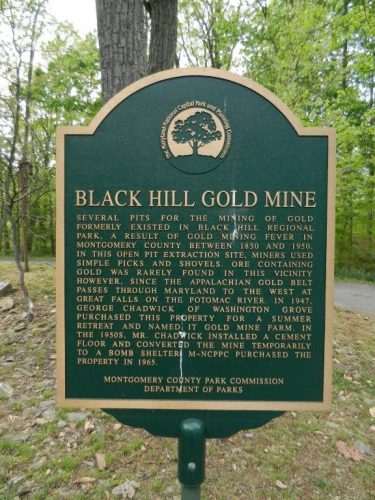
Kayla DiCello, a Junior at Northwest High School, Places Third in GK U.S. Classic
Kayla DiCello of Boyds, Md./Hill’s Gymnastics, finished third in the all-around at the 2021 GK U.S. Classic. She also topped the field on uneven bars with a 14.600.
Simone Biles came in first. The four-time Olympic gold medalist edged teammate Jordan Chiles of Spring, Texas/World Champions Centre in successful defense of her 2019 GK U.S. Classic all-around title (there was no competition in 2020 due to Covid-19).
DiCello, a junior at Northwest High School, is part of the United States women’s National gymnastics team. She is the 2019 Junior World Champion on vault and the 2019 U.S. Junior National Champion.
She will be at the Olympic trials next month.
Photos courtesy of USA Gymnastics.



Arrest Made in Boyds Murder, Vigil for the Victim to be Held This Evening at 6:30pm
A candlelight vigil will be held for Javon Gordon at Clarksburg High School this evening at 6:30pm. Javon was shot and killed on the 12900 block of Ethel Rose Way in Boyds this past Tuesday.
An arrest was made earlier today. Update and original release available below.
Per Montgomery County Police:
Homicide Arrest: Rodjaun Orlando Neil-Williams, 19, of Clarksburg, has been arrested and charged with the second-degree murder of 23-year-old Javon Jamal Gordon of Boyds. News release will be issued later today. Bond review today at 1:00 pm.
Original release from Montgomery County Police:
Detectives from the Major Crimes Division are investigating the homicide of 23-year-old Javon Jamal Gordon of Ethel Rose Way in Boyds. Investigators do not believe this was a random incident.
On Tuesday, April 13, at approximately 6:52 pm, the Emergency Communications Center (911) received a call for the report of a shooting in the 12900 block of Ethel Rose Way in Boyds. 5th District officers responded to the area and located Gordon laying in the street suffering from an apparent gunshot wound to his upper body. Residents had already begun to administer CPR and responding officers continued to attempt these lifesaving measures. Fire and Rescue personnel also responded to the scene. Despite the lifesaving attempts, Gordon was pronounced deceased at the scene.
Preliminary investigation by Major Crimes detectives has determined that Gordon briefly interacted with the suspect(s),who were in a vehicle, before he was shot. The suspect(s) then fled the area in the vehicle.
This remains an active and ongoing homicide investigation and no further details can be confirmed at this time.
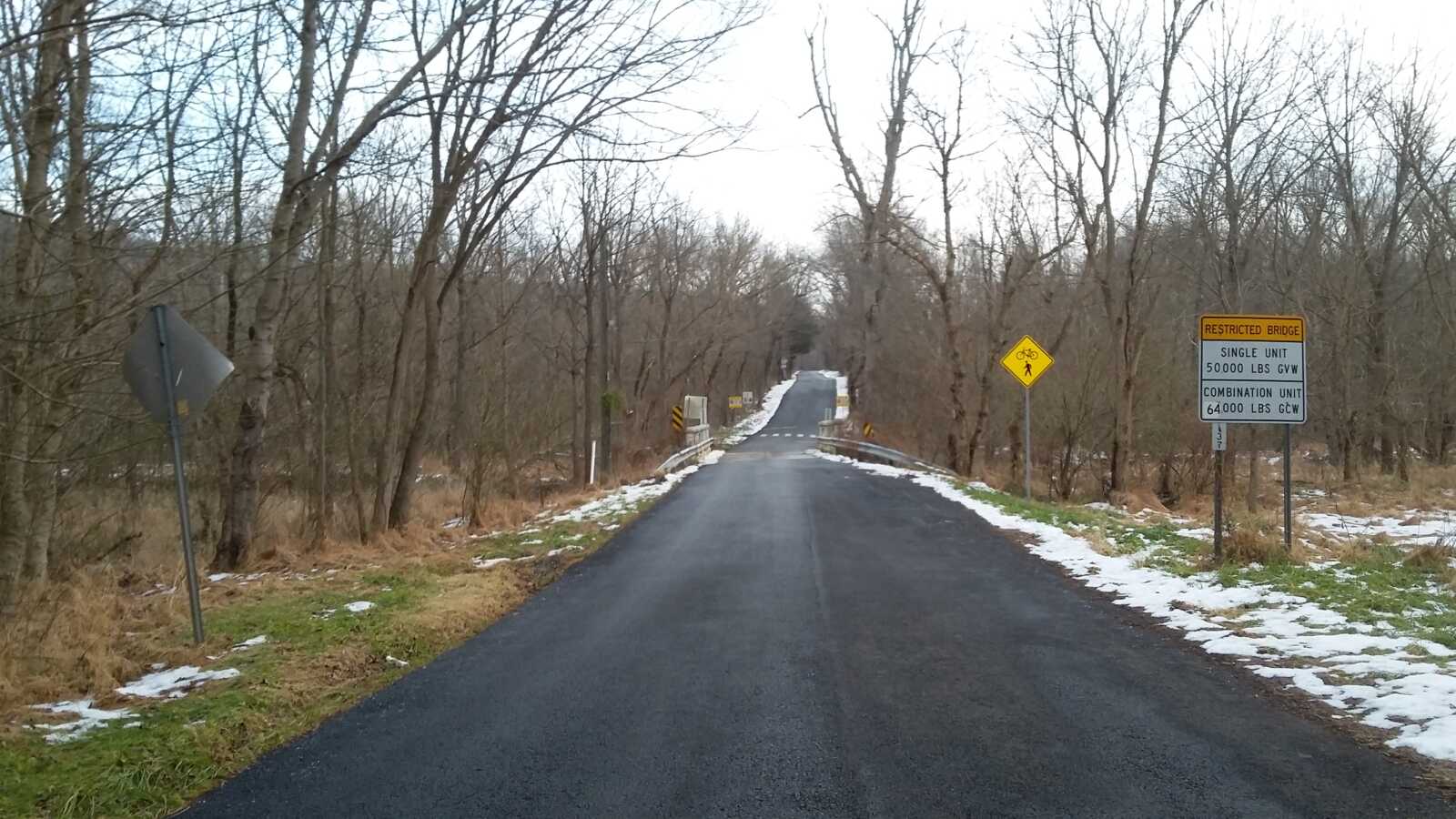
Controversy Surrounds Future of Historic Boyds Bridge
There are well over 600,000 bridges in the United States, with many of them barely remarkable to cyclists, drivers, and pedestrians passing over and under them.
However, plans to modify, replace, or altogether close them frequently cause controversy. Such is the case on Schaeffer Road in Boyds, where a bridge built in 1925 now has an uncertain future.
The 39-foot-long one lane bridge carries Schaeffer Road traffic over Little Seneca Creek, just west of the much newer Schaeffer Farms Trail crossing.
The existing historic bridge is in fact eligible for listing in the National Register of Historic Places, according to the Maryland Historical Trust. (Maryland Inventory of Historic Properties: 18-47).
As this single-span bridge has aged significantly, it is in need of substantial maintenance and repairs.
Schaeffer Road through Boyds is one of Montgomery County’s designated Rustic Roads. This designation is reserved for low-volume, primarily rural, roads that “reflect the agricultural character and rural origins of the County”, according to the Montgomery County Planning Department.
The Boyds Historical Society has recently learned that the County currently plans to replace not rehabilitate this historic bridge. A replacement bridge would not only have historical implications but also significant traffic and trail safety implications.
The advocacy group Action Committee for Transit points out that replacing this bridge may in fact directly conflict with the County’s ‘Vision Zero’ plan to eliminate severe and fatal vehicle crashes.
The narrow bridge serves as a traffic calming measure, making the Rustic Road and its Trail Crossing safer and much more accommodating for bicyclists and pedestrians travelling along Schaeffer Road as well as crossing Schaeffer Road exploring the Schaeffer Farms Trails. A wider replacement bridge would only increase vehicle speeds approaching and passing the trail crossing.
Designs or plans of any proposed replacement bridges have not yet been publicly released. It remains unclear if the replacement decision is final or if there is still potential to rehabilitate this historic bridge.
The bridge is not the Schaeffer Road’s only piece of history: in 1865, Germantown resident George Atzerodt, one of John Wilkes Booth’s co-conspirators who plotted to assassinate both President Abraham Lincoln and Vice President Andrew Johnson, was arrested at a farm along Schaeffer Road. Atzerodt was given a gun and assigned by Booth and other conspirators to kill the Vice President; though Atzerodt did not follow through, he was still arrested and ultimately hanged with other conspirators.
Feature Photo Courtesy of the Boyds Historical Society.

